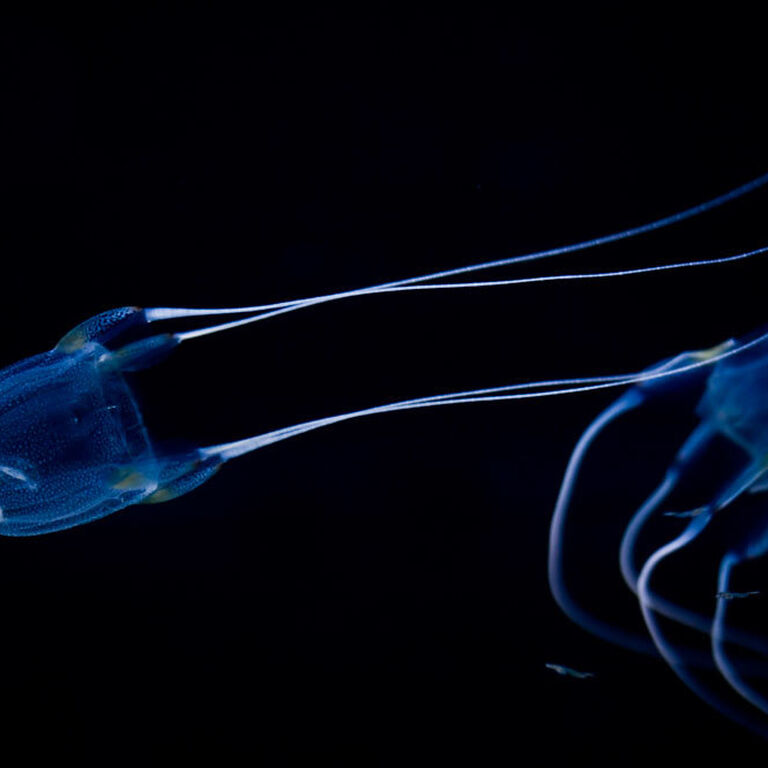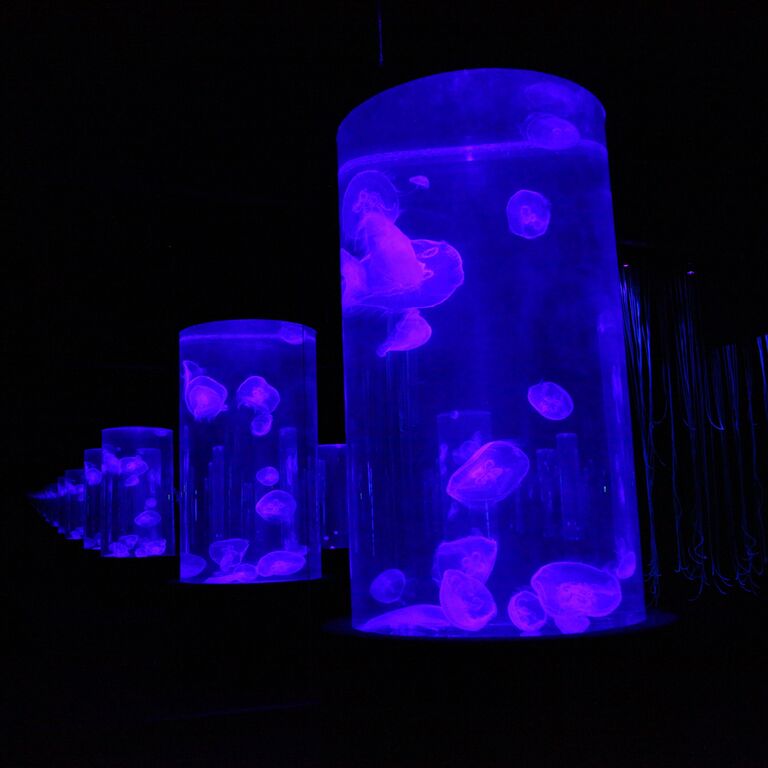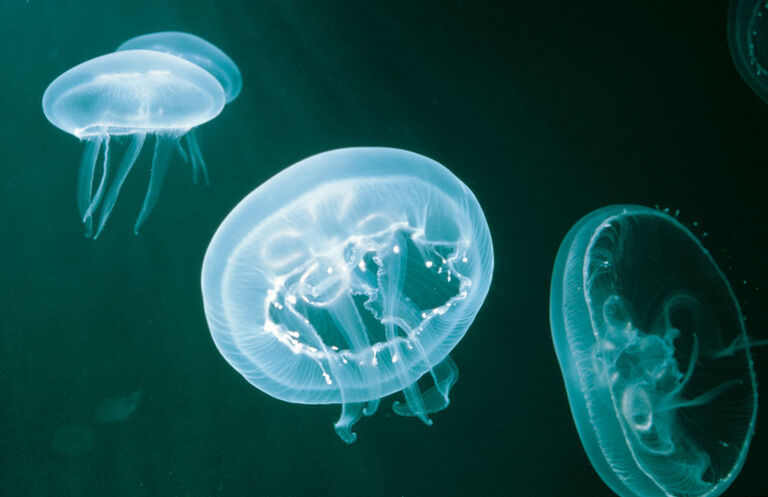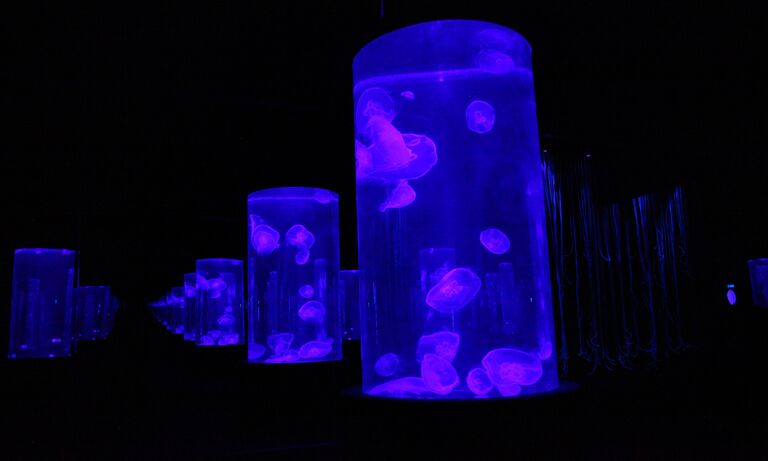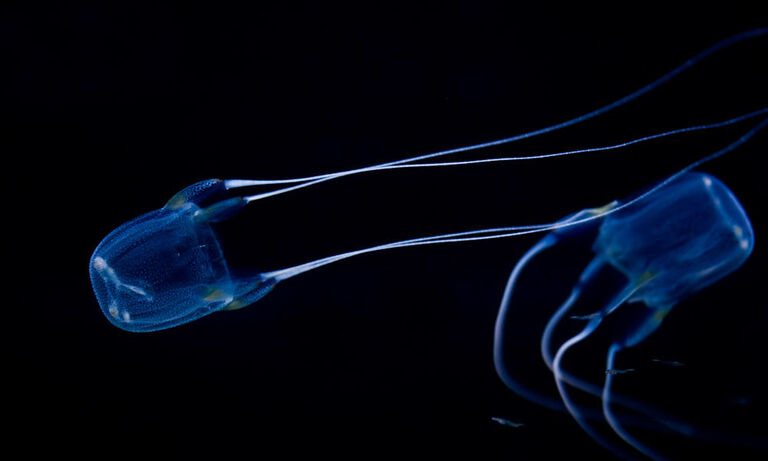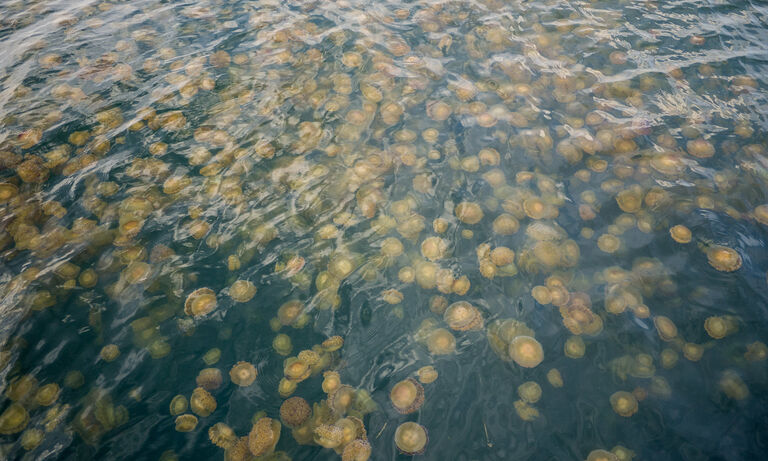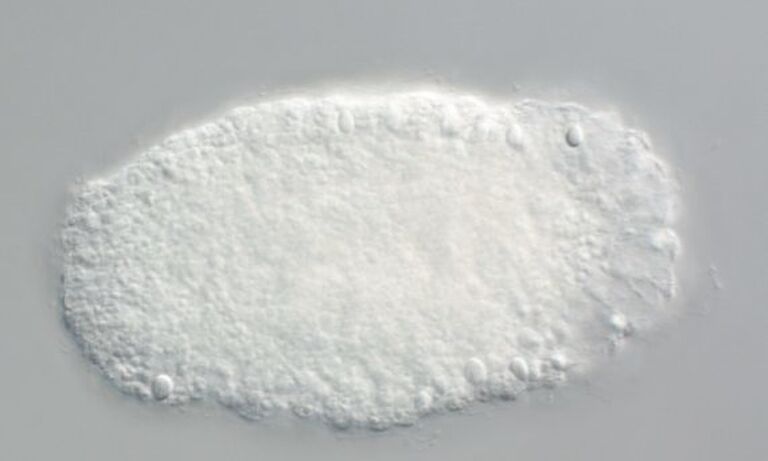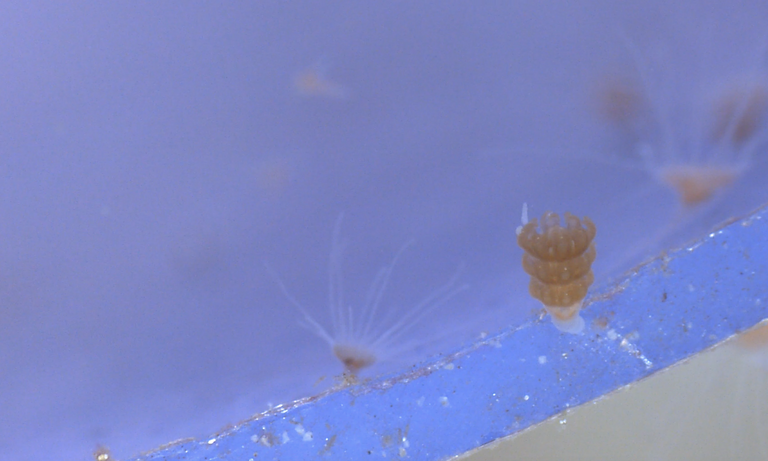Jellyfish
Jellyfish are ancient, appearing about 600 million years ago in the fossil record as one of the first complex animals on our planet. They typically live between three to nine months, although some can live for longer. Adult jellyfish are known as medusae and are the form most people normally associate with jellyfish. However, this is only one part of an intricate and fascinating lifecycle. Jellyfish are frequently perceived as simple animals with rudimentary nervous systems; however, their nerve networks allow complex reactionary mechanisms to external stimuli. Jellyfish are more interesting than many people realise.
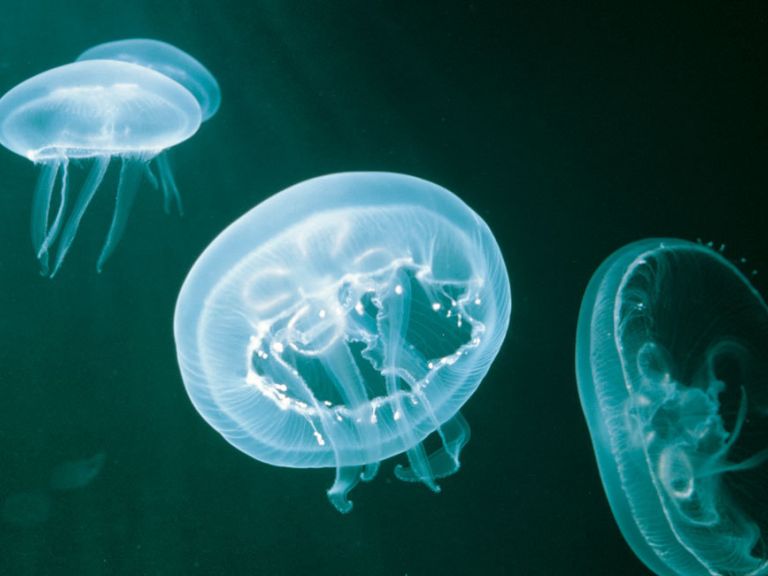
What is a jellyfish?
Jellyfish are part of the phylum Cnidaria, which includes 11 000 species of aquatic animals that are distinguished by the presence of cnidocytes, specialised cells for capturing prey. There are several classes of jellyfish, all with particular characterising features. Scyphozoans are referred to as “true jellyfish”: they look like a typical jellyfish or an umbrella with a handle. Hydrozoans do not follow the typical jellyfish body plan and are saucer-shaped. Hydrozoans are also associated with bioluminescence. Cubomedusae are known as “box jellies” for their box-like shape. These jellyfish can actually swim against the current, whereas hydro- and Scyphozoans simply drift. Most Cubomedusae polyps change directly into medusae without cloning. Finally, comb jellies are not jellyfish but Ctenophores, which is a separate phylum. Comb jellies do not have any stinging cells and have a semi-rigid structure.Habitats and lifecycles
Jellyfish are found in all oceans, and some even live in freshwater. South Africa is home to a great diversity of these animals, including a few endemic species such as the root-mouthed jellyfish, a scyphozoan characterised by the wing-like shape of their short, stiff oral arms. Jellyfish cannot digest calcium carbonate, meaning they cannot eat shellfish. So, most jellyfish feed on small crustaceans called copepods, fish larvae and other small animals. Others suspension-feed by extracting minuscule animals and phytoplankton from the water. If a jellyfish happens to eat a fish, gastric filaments in its head eject the bones out of its mouth (which is also its anus). If a jellyfish does not eat, it goes into a degrowth phase: it will use up its reserves and shrink.Do all jellyfish sting?
Jellyfish are infamous for their poisonous stings, but there are plenty of non-stinging species in the ocean. Although many jellyfishes have stinging cells (cnidocysts), some of them aren't harmful to humans. If you get stung by one of these species, the best thing to do would be to pluck away any tentacles, take a hot shower or apply heat to the area and rinse the wound with vinegar. Contrary to what popular culture tells you, you should never urinate on a jellyfish sting. An example of one of these species are moon jellyfish, Aurelia aurita, which are on display in our Jellyfish Gallery.
Fun facts about jellyfish
- Jellyfish have no brains, no hearts and no bones. In fact, they’re 95% water.
- Some jellyfish are theoretically immortal: adult jellies can revert to their juvenile polyp form when the environment becomes unsafe.
- Jellyfish’s stinging cells, called nematocysts, are single-use. Once a cell stings, it is destroyed and needs to regenerate.
- Using jellyfish mucus, scientists in the European Union are developing a technology that causes microplastics to clump together so that they can be more easily removed from the ocean.
- The best way to tend a jellyfish sting is to leave the sting in place, wash the sting and the entire wounded area in vinegar and then soak the wound in warm water for 30 minutes.
Life begins - the egg
Jellyfish reproduction is a fascinating process. Male and female jellies, known as medusae, gather in large numbers (often called “blooms”) to spawn. This means they release huge amounts of sperm and unfertilised eggs into the ocean around them, and the resulting fertilised eggs are usually left to drift freely in the ocean currents. These events are triggered by proximity to other jellies, light and food supply.Jelly babies - planula larva
A fertilised egg grows into a small larva called a planula, which resembles a microscopic flatworm covered in tiny hairs called cilia. These cilia beat rhythmically, allowing the planula to swim. When it is sufficiently large, the planula finds a suitable solid surface to attach itself to, usually somewhere on a seabed but sometimes on other animals.The long childhood - polyps
The attached planula develops into its next life stage: the polyp. A polyp is a small, stalked animal with one end fixed to the ground and the other extending into the water with a ring of tentacles surrounding its mouth. The jelly has a fully functioning digestive system at this stage and can catch prey for itself. You may notice similarities between a jellyfish polyp and other marine animals such as anemones and corals because they are very close relatives. The difference is that a jellyfish will continue to develop, while anemones and corals are essentially “adult polyps”. Depending on the species, the jelly can remain in this polyp stage for years, allowing time to mature while it waits for perfect conditions to develop into its final adult form.Budding teens - scyphistoma
When conditions are ideal, the polyp begins to reproduce asexually by cloning itself. The original egg and all its future clones will be either male or female. The polyp elongates and forms segments, eventually budding off to form independent animals and more polyps to speed up this process. This process is known as strobilation: the polyp’s tentacles are reabsorbed into its body, after which the body becomes narrower and clearly visible segments begin to form. The strobilating polyp is called a scyphistoma. Eventually, the grooves between these segments become deep enough for them to separate entirely, taking a fully independent set of muscles, nerves and digestive system with them.Finding themselves - ephyra
The tiny, newly budded segment of polyp becomes a free-living organism known as an ephyra, which is the precursor of an adult jellyfish. At this point, the ephyra is no more than a few millimetres across but feeds and grows as it swims. The tiny jelly does not have the closed bell shape and stinging tentacles of an adult jellyfish and has to rely on the undeveloped lobes of its bell to push food towards its mouth. Remember, this ephyra is just one of many clones. It’s possible that the original polyp, and copies of it, are still alive and may even outlive this jelly.Frisky, hungry adults - medusa
As the ephyra grows, its bell takes on the characteristic jellyfish shape, and its tentacles and oral arms grow into forms unique to its species. Although the initial adult is small, it is already mature and capable of reproducing. However, growing as large as possible comes with unique opportunities. Larger jellyfish typically have a higher chance of reproductive success and can deter predators more easily.Death (but not really)
The purpose of the medusa is to live long enough to reproduce, so jellyfish typically do not live very long in this phase. As they age, jellyfish put more and more resources into producing eggs or sperm, which comes at the cost of their immune system health. Jellyfish are exceptionally good at identifying perfect conditions for reproduction, which they do promptly and efficiently. Jellyfish blooms often occur as a result of overfishing or climate change: fewer predators and warmer oceans allow jellies to reproduce.
